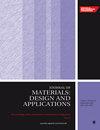轴向复合储层中牛顿相对非牛顿宾汉塑性的垂直位移
IF 2.2
4区 材料科学
Q3 MATERIALS SCIENCE, MULTIDISCIPLINARY
Proceedings of the Institution of Mechanical Engineers, Part L: Journal of Materials: Design and Applications
Pub Date : 2024-05-08
DOI:10.1177/14644207241246118
引用次数: 0
摘要
一般来说,油藏可能由砂、粘土或石灰岩等材料组成的复合沉积结构,这些结构由于沉积过程而呈现出不同的岩性。全面了解这些岩性对于准确评估油藏的碳氢化合物储存和生产能力至关重要。此外,这些信息对于实施各种采油技术(如注水、注气、注入表面活性剂、注入聚合物、注入碱性水溶液等)也是不可或缺的。在某些情况下,高粘度石油在注水过程中会表现出非牛顿特性。在提高石油采收率的过程中使用表面活性剂、碱性或聚合物溶液也会产生非牛顿特性。当非牛顿相、重力和储层异质性结合在一起时,采油方法就会面临挑战。在此背景下,本研究提出了一个在具有周期性层状结构的轴向复合储层中进行不相溶两相流动的数学模型。该模型考虑了 Buckley-Leverett 模型的非牛顿塑性宾厄姆型相扩展。为解决多孔介质的异质性与不连续通量函数问题,采用 Lax-Friedrichs 和 Lagrangian-Eulerian 方案获得了数值解。将数值解与使用不连续通量函数的 Oleinik 几何结构扩展版获得的分析解进行了比较。结果显示了冲击波和稀释波,以及多孔介质异质性导致的固定冲击。数值结果与分析解密切吻合,特别是拉格朗日-欧勒方法比拉克斯-弗里德里希方法更加精确。本文章由计算机程序翻译,如有差异,请以英文原文为准。
Vertical displacement of a non-Newtonian Bingham plastic by a Newtonian phase in an axially composite reservoir
In general, oil reservoirs may consist of composite sedimentary structures composed of materials such as sand, clay, or limestone, which exhibit varying lithology due to sedimentary processes. A comprehensive knowledge of this lithology is essential for accurately assessing their hydrocarbon storage and production capacity. Additionally, this information is indispensable for the implementation of various recovery techniques such as waterflooding, gas injection, surfactant injection, polymer injection, alkaline water solution injection, and others. Highly viscous oil can exhibit non-Newtonian behavior during water injection in certain cases. The use of surfactants, alkaline, or polymer solutions in enhanced oil recovery also introduces non-Newtonian behavior. Recovery methods face challenges when non-Newtonian phases, gravity, and reservoir heterogeneity are combined. Against this backdrop, this work presents a mathematical model for immiscible two-phase flow in an axially composite reservoir with a periodic-layered structure. The model considers a non-Newtonian plastic Bingham-type phase extension of the Buckley-Leverett model. To address the porous medium’s heterogeneity with discontinuous flux functions, the numerical solutions were obtained using the Lax-Friedrichs and Lagrangian-Eulerian schemes. The numerical solutions were compared to analytical solutions obtained using an extended version of Oleinik’s geometric construction for discontinuous flux functions. The outcomes display shock and rarefaction waves, as well as a fixed shock due to the porous medium heterogeneity. The numerical results closely correspond with the analytical solutions, seen particularly in the greater accuracy of the Lagrangian-Eulerian method compared to the Lax-Friedrichs method.
求助全文
通过发布文献求助,成功后即可免费获取论文全文。
去求助
来源期刊

CiteScore
4.70
自引率
8.30%
发文量
166
审稿时长
3 months
期刊介绍:
The Journal of Materials: Design and Applications covers the usage and design of materials for application in an engineering context. The materials covered include metals, ceramics, and composites, as well as engineering polymers.
"The Journal of Materials Design and Applications is dedicated to publishing papers of the highest quality, in a timely fashion, covering a variety of important areas in materials technology. The Journal''s publishers have a wealth of publishing expertise and ensure that authors are given exemplary service. Every attention is given to publishing the papers as quickly as possible. The Journal has an excellent international reputation, with a corresponding international Editorial Board from a large number of different materials areas and disciplines advising the Editor." Professor Bill Banks - University of Strathclyde, UK
This journal is a member of the Committee on Publication Ethics (COPE).
 求助内容:
求助内容: 应助结果提醒方式:
应助结果提醒方式:


